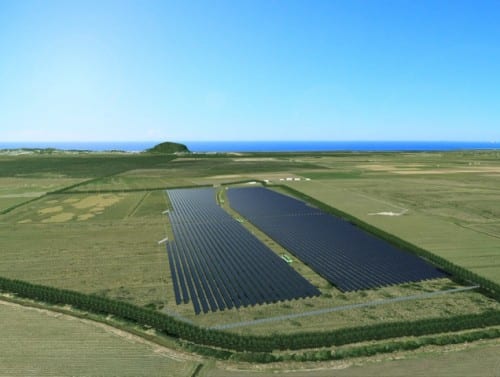The development of what will be Queensland’s biggest solar farm – the Sunshine Coast Council-owned Valdora solar farm – is underway, after the appointment of engineering group Downer to construct the project.
Sunshine Coast Mayor Mark Jamieson said on Wednesday that Downer has been awarded the tender to construct the 15MW, 57,000-plus panel solar array on council-owned land at Valdora.
The south-east Queensland council will be the nation’s first local government to build a utility-scale, grid-connected solar farm, which it says will generate enough electricity to cover the council’s entire consumption.
“The 15MW solar farm, covering 24 hectares of a 49 hectare site at Valdora, will be the biggest solar farm in Queensland – the next largest being the Gatton Solar Farm at 3.3MW – and the fifth largest solar farm in the nation,” Mayor Jamieson said. (Although it should be pointed out that it may be overtaken by the 25MW Barcaldine solar farm).
“By 2017 it will offset 100 per cent of the organisation’s electricity consumption across all its facilities and operations, with solar energy going into the grid.
“That includes our administration buildings, swimming pools, performance venues and community centres, our holiday parks, libraries and art gallery and our sport and recreation facilities.
“Most other governments are still talking about offsetting 50 per cent of their energy needs from renewables by 2025 so our 100 per cent offset puts us way ahead of the game and that’s a win for our environment and our community.
“And it doesn’t stop there. The solar farm is also estimated to save this council millions of dollars over a 30-year period based on today’s electricity costs, which are anticipated to increase substantially in the future.

The solar farm has been in the planning for several years, and will go ahead despite the council failing to obtain financing under the current ARENA solar funding round, which excluded councils.
Jamieson said every Sunshine Coast ratepayer will benefit from the certainty this project will provide in regard to council’s electricity expenditure and in the context of combating rising electricity costs.
“This project will see us proactively take control of our electricity supply, isolating council from increased price risk,” he said.
“The Sunshine Coast Solar Farm will, at its peak, generate 15,000 kilowatts of electricity from the sun. Over one year the solar farm will generate sufficient electricity to power approximately 5000 homes.”
Divisional and Economic Development and Innovation Portfolio Councillor Stephen Robinson described the game-changing project as a major step forward for the council, its residents and the clean technologies sector.
“This is certainly an exciting initiative which provides real savings for this council and therefore our ratepayers, while positioning us as leaders in the renewable energy space,” Cr Robinson said.
“Our residents can be very proud of the positive economic and environmental outcomes this project will deliver.
“Council has undertaken extensive analysis on the potential budget savings the solar farm project will provide.
“Naturally any savings forecast includes the up-front build costs, in addition to the ongoing operational costs for the farm.”
Energex chief executive officer Terry Effeney said the network saw grid-scale Projects like Valdora as a key part of its low-carbon future.
Diamond Energy, the council’s energy retailer, has commended the council for “taking control” of its electricity supply.
“Sunshine Coast Council is leading by example and showing Queensland residents how to combat rising electricity costs while supporting a clean energy future,” said managing director Tony Sennitt.
“The new energy future is about using our plentiful natural resources, so let’s turn on the sunshine and deliver more energy to this pro-active local council.”








